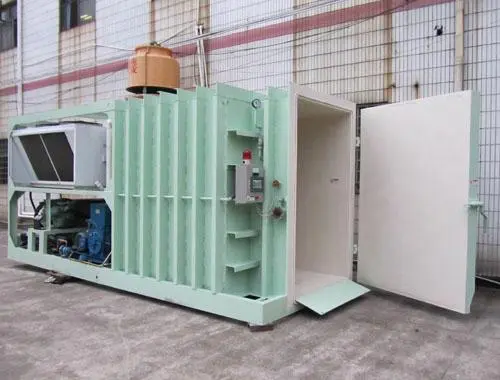Optimal Techniques for Cold Warehouse Storage Solutions and Management Strategies
Cold Warehouse Storage The Backbone of Perishable Goods Management
In today's global economy, the demand for the efficient storage and distribution of perishable goods has never been higher. A cold warehouse, designed specifically for storing temperature-sensitive products, plays a crucial role in this supply chain. By maintaining controlled environments, these facilities ensure that perishable items such as fruits, vegetables, dairy products, meat, and pharmaceuticals remain fresh and safe for consumption.
Understanding Cold Storage
Cold storage refers to the refrigeration of products in a designated facility or warehouse. These warehouses are equipped with specialized refrigeration systems that keep the environment at specific temperature and humidity levels, tailored to the needs of various products. For instance, the ideal storage condition for fresh produce might be around 0°C to 4°C (32°F to 39°F), whereas frozen goods must be stored at temperatures below -18°C (0°F).
The importance of cold storage cannot be overstated. It mitigates the risk of spoilage and waste, extending the shelf life of perishable goods. This capability is vital not just for food safety but also for economic efficiency. Businesses that rely on cold storage can minimize losses and reduce costs associated with waste.
Types of Cold Storage Facilities
There are various types of cold storage facilities, each tailored to specific needs
. Some of the most common include1. Refrigerated Warehouses These warehouses maintain a controlled temperature range ideal for fresh products. They often utilize multi-zone cooling systems that provide optimal conditions for various types of goods within the same facility.
2. Freezer Warehouses These are designed for frozen goods and maintain sub-zero temperatures. They are equipped with state-of-the-art insulation to ensure consistent refrigeration and prevent ice build-up.
3. Blast Freezer Storage This specialized type rapidly reduces the temperature of food products, ensuring that they are frozen quickly. This method helps preserve texture and nutrients, making it a popular choice for restaurants and food manufacturers.
cold warehouse storage

4. Climate-Controlled Storage Beyond temperature, humidity levels can greatly affect product quality. Climate-controlled facilities effectively manage both temperature and moisture levels, making them suitable for products that require specific humidity conditions.
Technology in Cold Storage
Advancements in technology have significantly enhanced the efficiency of cold storage facilities. Modern warehouses now utilize sophisticated monitoring systems that provide real-time insights into temperature and humidity levels. These systems can alert managers about any deviations, allowing immediate corrective actions to prevent spoilage.
Furthermore, automation is making its mark in the cold storage sector. Automated storage and retrieval systems can optimize space and improve handling efficiency, leading to quicker turnaround times. Robotics are increasingly used for picking and packing, reducing labor costs and human error.
Challenges in Cold Storage
While the benefits of cold storage are abundantly clear, there are notable challenges. Energy consumption is one of the primary concerns, as maintaining low temperatures requires significant electricity usage. The industry is continuously seeking sustainable solutions, such as energy-efficient refrigeration systems and renewable energy sources.
Additionally, the initial investment for building or upgrading to a cold storage facility can be substantial. However, the return on investment can be justified by the reduction in product loss and an increase in marketability of goods.
Conclusion
Cold warehouse storage plays an integral role in the modern supply chain, particularly for businesses dealing with perishable goods. By ensuring that products remain in optimal condition, these facilities not only protect consumers but also help businesses thrive in a competitive marketplace. With ongoing advancements in technology and a growing focus on sustainability, the future of cold storage looks promising, ensuring that it will continue to be a vital asset in the journey from farm to table. As the global demand for fresh and safe products increases, the cold storage industry will undoubtedly evolve to meet these challenges head-on, safeguarding the quality and availability of perishable goods for consumers worldwide.
















































































































